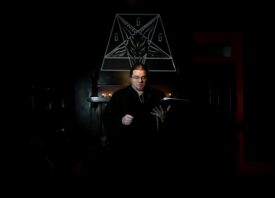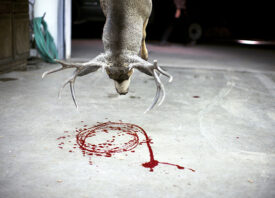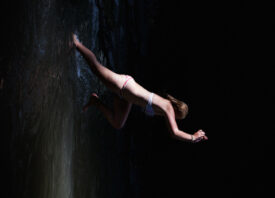Search this site
These Haunting Still Lives Pay Homage to the Natural World


“With my body shaking uncontrollably, the doctors and nurses handed me the slipperiest, most precious thing I’d ever had,” the photographer Emily Rose Larsen remembers of the moment she gave birth. “Audibly, I told whoever may be listening that I was the last person equipped to hold him. After all I had done in the last 42 months and five hours, couldn’t someone else keep him safe for a minute until I get control of my hands again?
“I was helpless and unable to utter a word from exhaustion so I just grabbed my hospital shirt with each hand and hoped he didn’t slip out of my embrace. It was apparent to me, in that moment, I was now considered a mother, and my needs were very low on the list for everyone in that room, while I shook from shock, a resident learned how to sew a very raw location, and my newborn made his first poo down my arm.”
Before giving birth to her child, Larsen was left alone with her mother and husband for five hours, with the nurses not believing her when she said she was experiencing large contractions. “The doctor was busy, and they told me not to push and started prepping the room while a resident watched the action below,” she recalls. “I told him repeatedly that he had my permission to deliver the baby, at which he chuckled. The doctor showed up as my body decided to do what needed to be done.”
The experience marked a turning point for the artist, prompting her to reflect on modern birthing practices and humanity’s increasingly broken relationship with our animal instincts and the rest of the animal kingdom. During her pregnancy, she’d researched this history of midwifery, learning about how the medical field had historically excluded the voices of women with wisdom and experience.
“I was perturbed by what little actually understood information exists,” she says. “Then there are the sexist practices that have come and gone out of fashion like the ‘husband stitch,’ which is horrible for women), twilight birth, automatic episiotomies, and so on.” In those stories, she saw parallels between the ways in which mother’s bodies had been ignored and the harm that’s been done to the natural world.
On one level, mothers are revered, as is nature. But just as the modern birthing process can feel impersonal, our interactions with wildlife remain mediated and sanitized. Larsen loves visiting the Museum of Natural History, but the taxidermied animals also spark unease within her. What spoke to me was the fetishized way we treat the natural world in museums,” she tells me. “The glass box, the taxidermied expressions, and painted environments. Cinematic lighting to set the mood. But what mood? There are real memento mori vibes in a natural history museum.”
In response to these questions, Larsen captured a series of photographs of the animals at the museum before incorporating those pictures into rich and evocative still lives–themselves a kind of memento mori for the natural world. “I ruminate on an idea for a long time, and then once I have a solid start and the basic set pieces acquire, I dive into shooting headfirst,” she says now. “I shot this project in a week, not including the original museum visit. I shoot most of my projects very quickly because they’ve been dancing around in my head for a long time. It’s a cathartic dumping of passion.
“A lot of the props and flowers are things I’ve collected throughout the year–on walks, in my backyard, randomly while shopping. I have them peppered around my house. While I’m constructing, I start by walking around the house and thinking of what I need and what symbolically makes sense to me.
“Then I fill in the gaps with what’s still needed–usually, the flowers. Most flowers for me are inherently symbolic and I go more for shape and color than prescribed symbolism. I almost always include flowers or fruit because I appreciate the homage to traditional painted still life.” She included real flora and artificial plants; sometimes, it’s impossible to tell the difference.
The result is Beastly, a series of pictures reflecting on our fetishized yet removed understanding of our animal instincts and larger place in the world. Inspired by her experiences becoming a mother, perhaps it also contains traces of memories from her own childhood–a time when she could explore the natural world without looking through glass.
“I grew up on an island, accessible only by ferry, in a house set back in the woods,” she remembers now. “The forest and beach were my playgrounds in all seasons. My sister and I would play most of the day in an imaginary world set in our woods and grass and ponds. I listened to chirps and peeps as I fell asleep and patiently waited for birds to eat seed from my hand.”






All photos © Emily Rose Larsen


